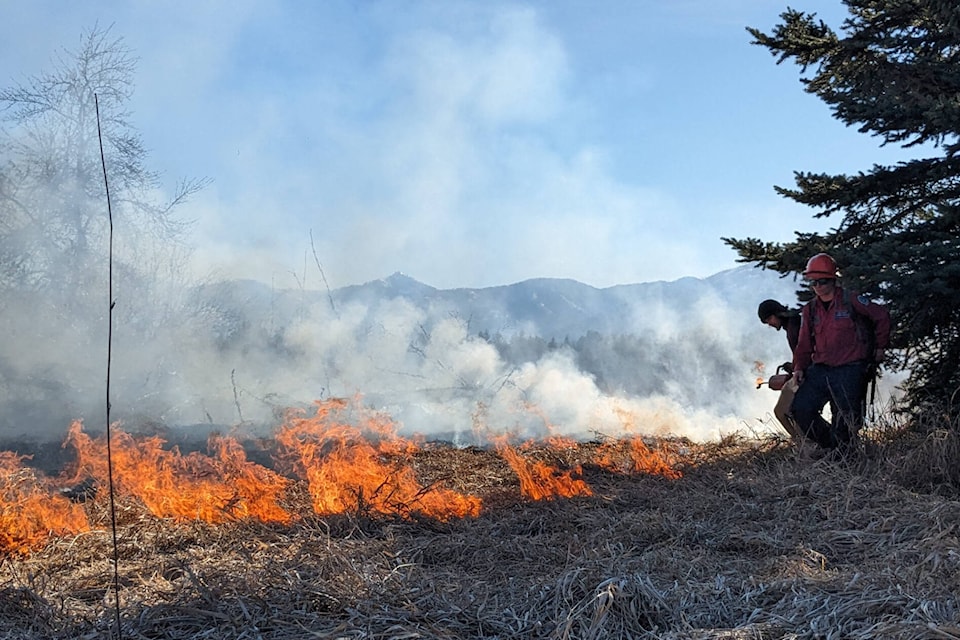Submitted
Lower Kootenay Band coordinated a prescription burn with BC Wildfire Service and Creston Fire Rescue. The controlled burn was conducted on March 18th 2024 and covered nearly 9 hectares of land along highway 21 in Creston, BC.
The prescription was carefully executed once the required conditions were met for weather, venting, and public communication. It was also performed before the bird nesting window as to minimize the impacts to wildlife.
Over 30 people were on site during burn day, many who were experienced with fire, and many who came to observe and learn.
Prescription burning is one of many approaches that Lower Kootenay Band is using to manage the risk of wildfires. Highway 21 is a priority area because of the accumulation of combustible material, it’s exposure to high volumes of traffic, and it’s proximity to homes.
This area could easily ignite from a cigarette butt, lightening strike, or vehicle traffic and spread into the neighboring forest. This burn has successfully exhausted many of the fuels that had the potential of lighting this summer.
ʔak̓aq̓ⱡahaⱡxu have stewarded the land of two arches with cultural burning for thousands of years, according to Robin Louie, a land user and elected Lower Kootenay Band Councillor.
The surrounding ecosystem has evolved with frequent low-intensity fire. There are countless benefits from cultural burning, including enhanced edible plant and mushroom production, the creation of habitat and pathways for ungulates, the regulation of insect populations, and increased visibility within forests.
Burning is also healthy for the trees; it strengthens their bark, helps germinate their seeds, and clears away competition so that they can grow big and healthy. Cultural burning may also help manage the invasive plant species that we now see spreading across our landscapes.
Frequent low-intensity burning is essential for a thriving ecosystem. The absence of fire can be seen and felt by looking into the unnaturally dense forests, the loss of habitat for animals, the reduction in biodiversity, and the intensity of wildfires.
There are numerous reasons for the increase in catastrophic wildfires such as climate change, the density of tree plantings, and the absence of cultural fire. The thick and crowded forests that we are accustomed to seeing today are not natural and do not reflect the historical forest structure.
Frequent low intensity fire once kept the forest canopy and understory more open and spaced out which prevented the devastating fires that we are experiencing today.
Uncontrolled fires are extremely frightening and impact thousands of people in BC each year. However, carefully planned and controlled prescription or cultural fire can help reduce wildfire disasters.
Restoring our relationship with fire and responsibly reintroducing it to our landscapes is essential for land stewardship. Lower Kootenay Band is excited to continue with our fire resiliency objectives and we look forward to seeing our various programs grow and evolve.
